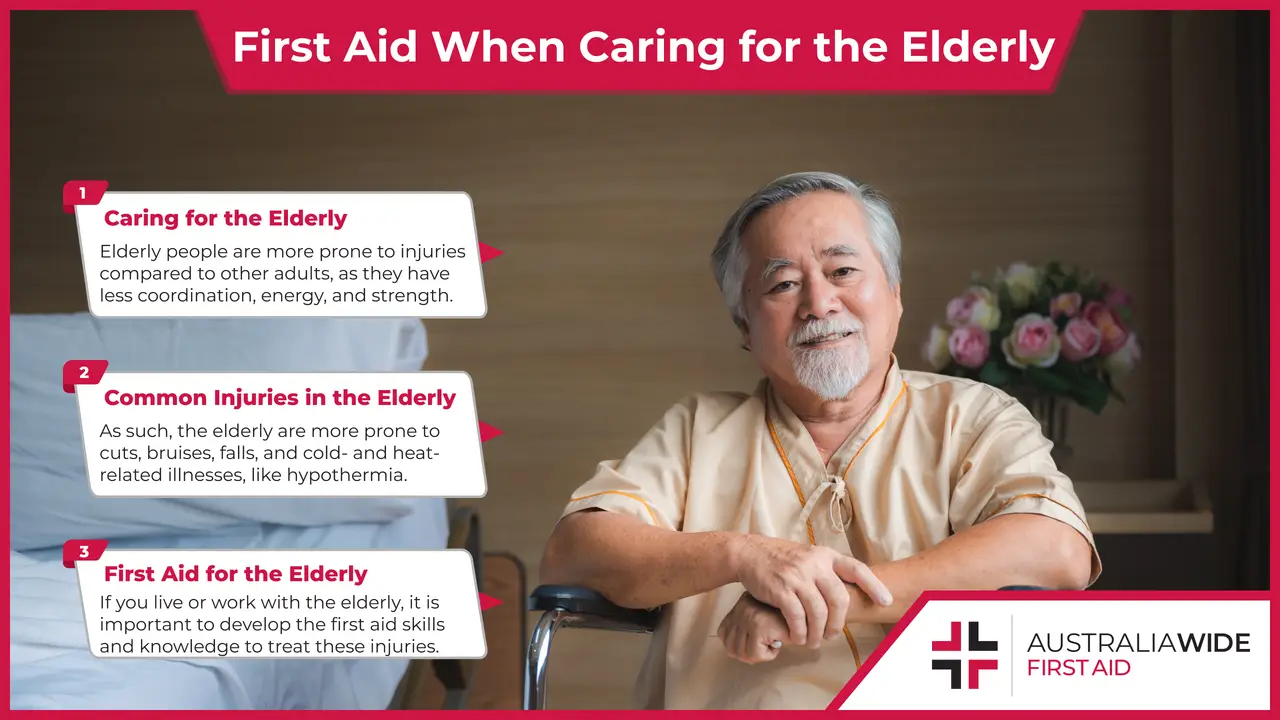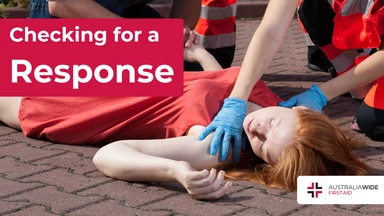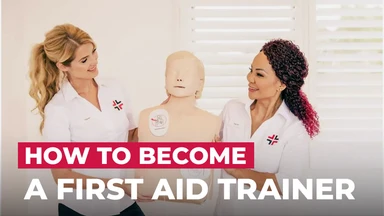First Aid When Caring for the Elderly


The elderly are prone to sustain injuries more than other adults.
This is because they are no longer as physically strong as they used to be. You need to know the right first aid to use for cuts, falls, bruises, and breathing issues and how to apply them.
First aid must be applied immediately before taking the senior to the hospital. At the same time, ensure that things that can cause injuries, falls and cuts are removed and the senior is in a safe environment at all times. Here are the appropriate first aid to apply.
The elderly easily get cuts and bruises. This is due to the fact that the older one gets, the more fragile their skin becomes. Cuts and bruises can easily lead to an infection if they are not properly taken care of. This happens because most of the elderly have underlying health conditions which lowers the immune system of their body.
For minor cuts or bruises, remove dirt and clean the area with water (tap water preferably). If there is bleeding, put a bandage on it. If there are no bandages around (you should always have them though), put a clean cloth on it and press on it firmly. Raise the wound area above the senior's heart level. If it is still bleeding, put a second bandage on the bandage you have put before. More information about basic wound care can be found on the WA Department of Health's website.
If there is a major cut or there is heavy bleeding that just won't stop, call the emergency department on Triple Zero (000) immediately or take them there. After the initial treatment, ensure the wound is kept clean. If you notice there is drainage from the wound, redness or swelling, it might mean that there is already an infection. Take the senior back to the hospital.
So many things make seniors fall. From research on falls among seniors, it was revealed that about one in every three seniors falls every year. This is why it is important to make sure that things which can cause falls are avoided to reduce falls.
Some of the causes of falls among seniors include poor vision, lack of physical activity by the senior, immobility, weakness in the lower body, dizziness, and balance problem/s.
If a senior falls but has not been hurt badly, put them in a position that is comfortable for them. Make sure you elevate the injured area and put an ice pack on it for about 10 minutes. If you see any serious bruises or swelling, call the emergency department immediately. More information about treating soft tissue injuries with the R.I.C.E.R technique can be found in our Resource Library.
If a senior falls and they've seriously hurt any part of their body, ensure they don't move and call the emergency department immediately. They might panic if they see you are afraid, so reassure them and remain calm. You can also cover them with a blanket to keep them warm. If it's obvious that they've fractured a bone, apply the first aid steps outlined in our Resource Library.
The body temperature of older adults is quite different. This is due to the fact that many of them have health conditions or take prescriptions which have affected their body temperature balance.
It is important they put on layers of clothes when outdoors than can protect them. Also ensure that they drink plenty of water and have access to water at all times.
If a senior's temperature is above 40°C or 104°F, the rate of their breathing increases, and they are nauseous or vomiting, call the emergency department immediately. Move them to somewhere cool or give them cold water to drink. You can also cover them with damp clothes to make their body cool. More information about heat stroke first aid can be found in our Resource Library.
If a senior is shivering, drowsy, has a weak pulse, has an increased heart rate or breathing rate, and is quite confused, ensure you call the emergency department immediately. Then move them indoors and cover them with warm blankets. If they are in damp or wet clothes, change them out of it and give them dry clothes to put on. Just try to warm them up as much as possible until the emergency arrives. More information about first aid for hypothermia can be found in our Resource Library.
As we get older, there are changes that occur in our body. The elderly are at greater risk of experiencing stroke, heart failure or heart attack. You need to know the symptoms of these conditions so you can be able to identify them when they occur.
The symptoms of a heart attack in seniors are not usually pronounced so you need to ask them from time to time so you can act immediately. Ask them to tell you if they feel any discomfort in their upper bodies, shortness of breath or chest pain. If you notice any of these symptoms or they complain to you about it, call the emergency department at once. It is better to be safe than sorry.
Here are the symptoms to look out for in seniors to know if they are having a stroke: if they have difficulty speaking, weakness in their arms or their face is drooping, you should call the emergency department immediately. For additional details on first aid treatment for stroke, head to our Resource Library.
You should learn how to perform CPR if you live or work around elderly people. Seniors are more prone to having cardiac arrest than any other age group. Cardiac arrest can occur anytime so you need to be prepared for it.
To administer CPR for breathing difficulties in the elderly, follow the procedure outlined in our CPR chart. After you delivery rescue breaths, keep checking for signs of release be seeing if the chest is rising and falling. For breathing difficulties in the elderly, also make sure to call the emergency department immediately and continue with CPR until medical help arrives. This procedure is called the basic life support flow, or DRSABCD.
If you have the elderly around you, taking a proper first aid and CPR training will help you understand their conditions and care for them better. Ensure you look out for any of the symptoms above and give them the appropriate first aid as you await the arrival of medical help.

March 18, 2025
Checking for a response is critical before proceeding with any first aid assistance. Knowing if a casualty is conscious or not allows you to use the appropriate techniques. Using gentle but firm responsiveness techniques, such as the COWS method, mean you can check for a response while remaining respectful to the casualty.

February 25, 2025
When coming across someone who appears unconscious, injured, or in need of medical help, it’s instinctive to rush to their aid. Ensuring the scene is safe before assisting the person is not only a fundamental principle of first aid but also critical to preventing further harm.

March 8, 2024
Becoming a first aid trainer in Australia is a rewarding and impactful career choice that allows individuals to make a significant contribution to the community by imparting life-saving skills.